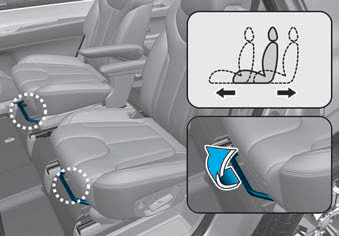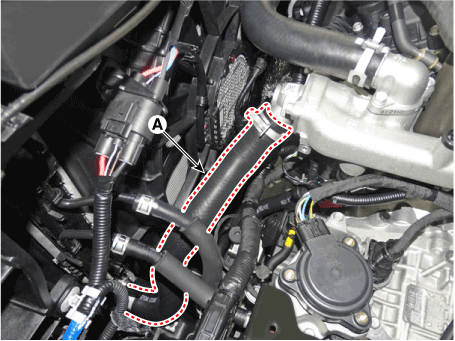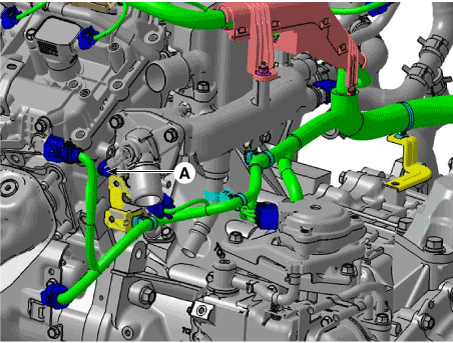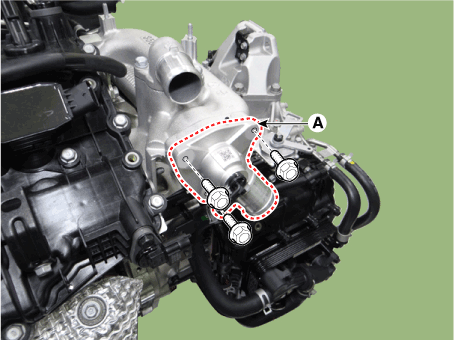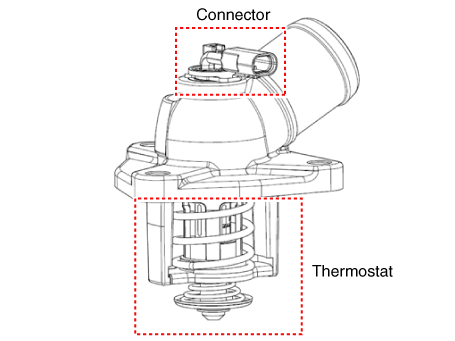Trouble Symptom
|
Probable Cause
|
Remedy
|
Coolant leakage
|
| • |
From the thermostat gasket
|
|
Check the mounting bolts
|
| • |
Check the torque of the mounting bolts
|
|
| • |
Retighten the bolts and check leakage again.
|
|
Check the gasket for damage
|
| • |
Check gasket or seal for damage
|
|
| • |
Replace gaskets and reuse the thermostat.
|
|
Cooled excessively
|
| • |
Low heater performance (cool air blowed-out)
|
| • |
Thermogauge indicates 'LOW'
|
|
Visually check after removing the radiator cap.
|
| • |
Insufficient coolant or leakage.
|
|
| • |
After refilling coolant, recheck.
|
|
Check GDS & engine start
|
| • |
Check connection of the fan clutch or the fan motor.
|
※ If the fan clutch is always connected, there will be a noise at idle.
|
| • |
Check the engine coolant sensor, wiring and connectors.
|
| • |
Replace the components.
|
|
Remove the thermostat and inspect
|
| • |
Check if there are dust or chips in the thermostat valve.
|
| • |
Check adherence of the thermostat.
|
|
| • |
Clean the thermostat valve and reuse the thermostat.
|
| • |
Replace the thermostat, if it doesn't work properly.
|
|
Heated excessively
|
| • |
Thermogauge indicates 'HI'
|
|
Visually check after removing the radiator cap.
|
| • |
Insufficient coolant or leakage.
※Be careful when removing the radiator cap of the overheated
vehicle.
|
| • |
Check air in cooling system.
|
|
| • |
After refilling coolant, recheck.
|
| • |
Check the cylinder head gaskets for damage and the tightening
torque of the mounting bolts.
|
|
Check GDS & engine start
|
| • |
Check the fan motor performance as temperature varies.
|
| • |
Check if the fan clutch slips.
|
| • |
Check for water pump adherence and damaged impeller.
|
|
| • |
Check the engine coolant sensor, wiring and connectors.
|
| • |
Check the fan motor, the relay and the connector.
|
| • |
Replace the fan clutch, if it doesn't work properly.
|
| • |
Replace the water pump, if it doesn't work properly.
|
|
Immerse the thermostat in boiling water and inspect.
|
| • |
After removing the thermostat, check if it works properly.
※ Check the thermostat opens at the valve opening temperature.
|
|
| • |
Replace the thermostat, if it doesn't work properly.
|
|
Components and components location
Components
1. Water pump pulley
2. Water pump
3. Water pump gasket
Repair procedures
Removal
•
Be careful not to damage the parts located under the vehicle
(floor under cover, fuel filter, fuel tank and canister) when
raising the vehicle using the lift...

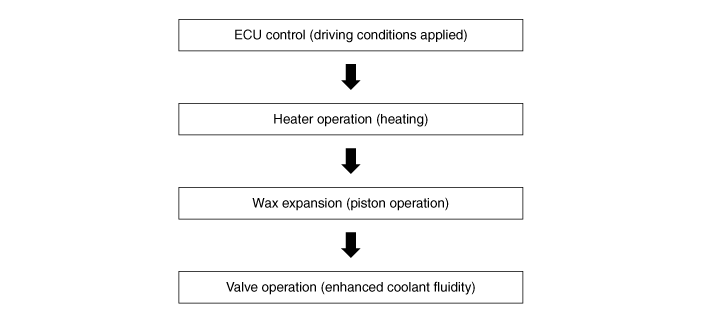
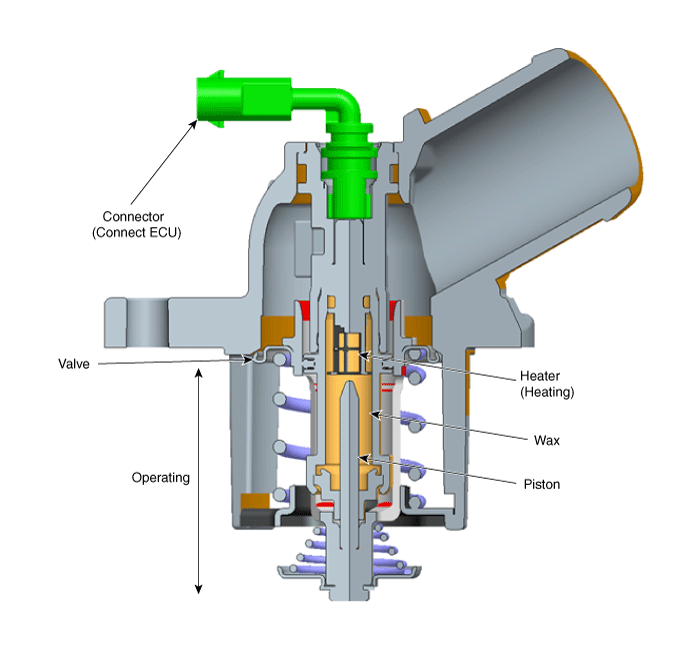
 Water pump
Water pump